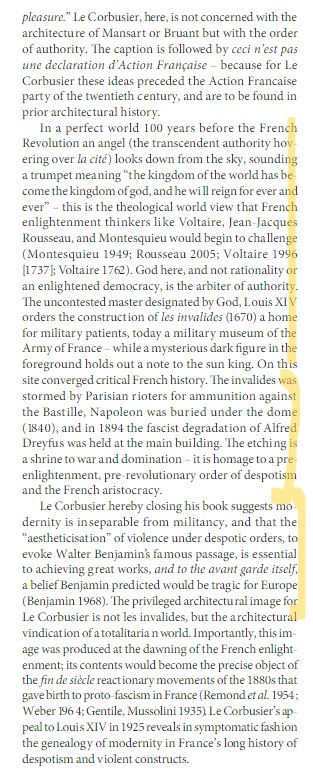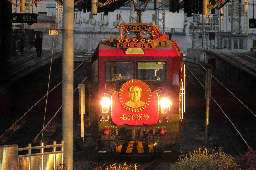https://www.researchgate.net/publication/304028755_The_ghost_in_the_city_industrial_complex_Le_Corbusier_and_the_fascist_theory_of_Urbanisme
Abstract and Figures
In 1927 le Faisceau’s newspaper Le Nouveau Siècle printed a feature “Le Plan Voisin” on Le Corbusier’s 1922 redesign of Paris, including an extract Le Centre de Paris from his Urbanisme (1925). Le Corbusier’s book was considered the “prodigious” model for the Fascist state that the league’s leader Georges Valois called La Cité Française – after his mentor the French engineer and revolutionary philosopher Georges Sorel, who, originally on the radical left, would eventually be credited as the parent of twentieth-century fascist thought. Valois and Le Corbusier had inherited the longer genealogy of French thought from the turn of the century, namely the bitter opposition to the French revolution, and quarrel with the Enlightenment that was characteristic of many French intellectuals in the early twentieth-century. The final page of Urbanisme features a painting depicting Louis XIV ordering the construction of les Invalides (1670). “Homage to a great urbanist: This despot conceived great things and realized them.” The image was produced at the dawning of the French enlightenment: its contents would become the precise object of the fin de siècle reactionary movements of the 1880s that gave birth to le syndicalisme. Le Corbusier thereby historicises his project for the new Paris.
Le Corbusier’s image of the modern city in 1927 visualises the alchemical history of the pro-blem of modernity, its transformation from pure mind into action: from the transformation of enlightenment philosophy from Kant and Hegel’s response to Kant, to its French translation in the industrial models of Sorel, the anarcho-syndicalist movement, and its savage end in the third reich– the spatio-industrial organisation par excellence that modernised genoci-de and conceived of mass murder as an architectural regime. French fascism with its roots in romanticism, idealism and anti-enlightenment thought not only contributed to but was fundamental to Le Corbusier’s urban formulation that reproduced ideas forged in the reactionary constructs that appeared as early as the French enlightenment, the intellectual laboratory in which philosophical fascism gestated for 200 years. Le Corbusier represents through the disciplinary gure we call “Architecture” the historical event of putting the problems of enlightenment thought into practice aprés Kant and Hegel.
Corbusier presented a slide show of his urban plans at a fascist rally
Show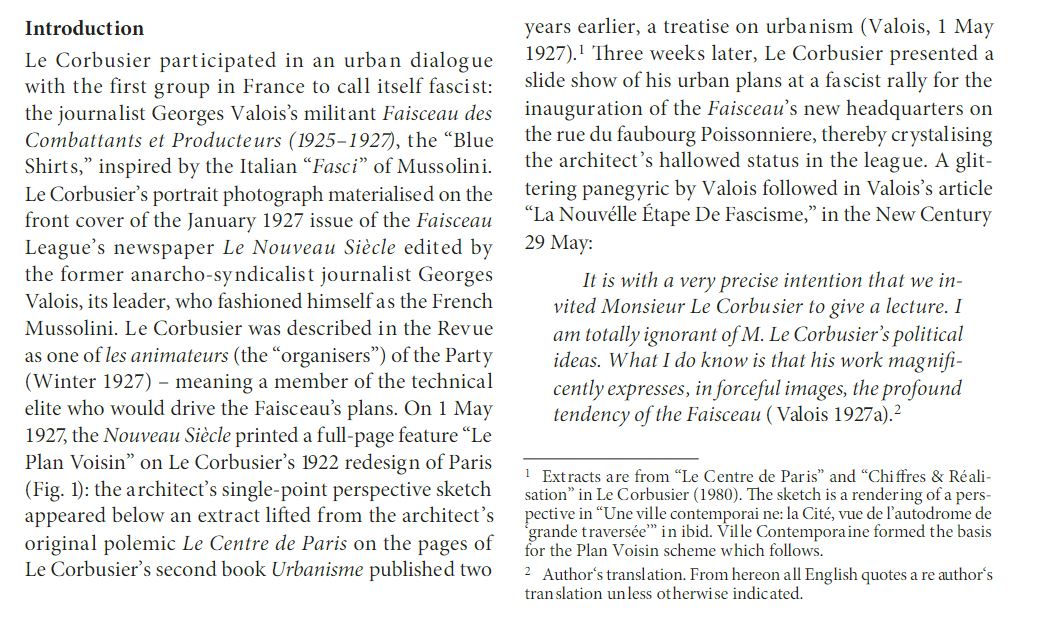 Show
Show
Corbusier 🤝 Valois Taylorist urban industrial complex
Show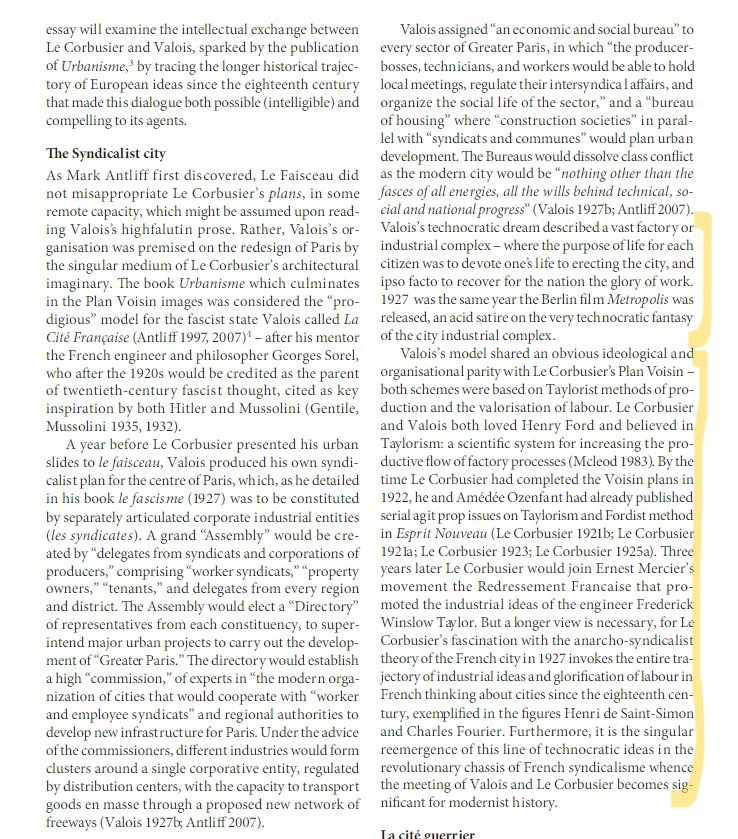
thinking about ancient greece
Show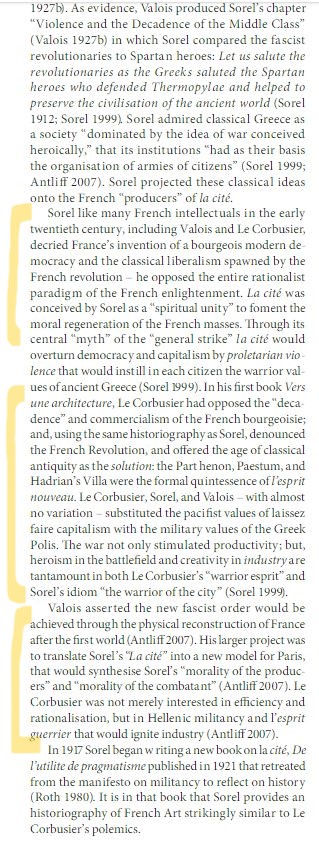 Show
Show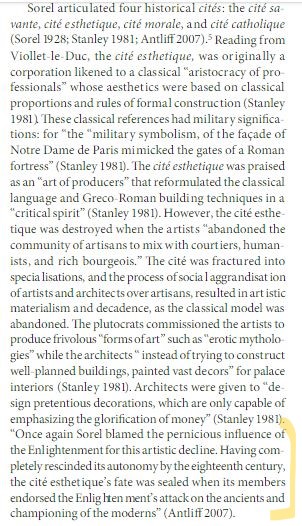 Show
Show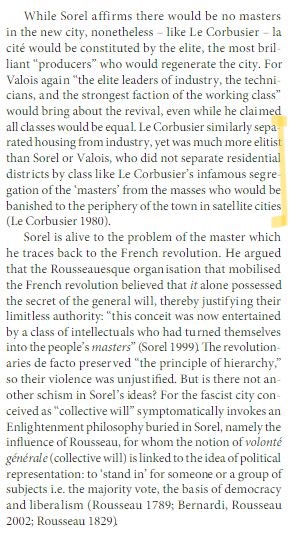 Show
Show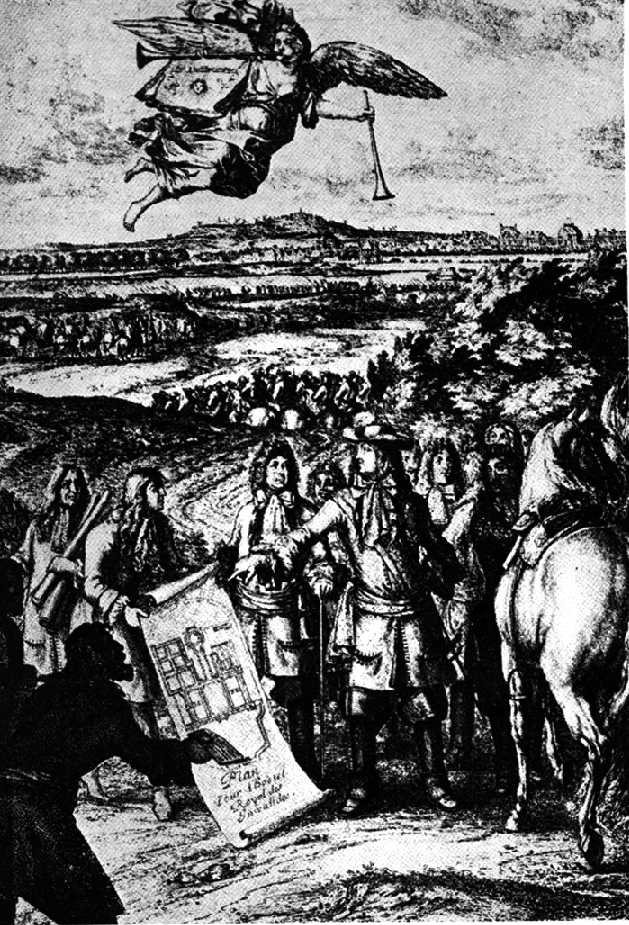 Show
Show Show
Show